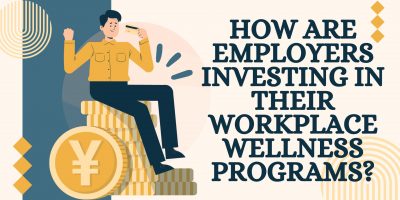
How are Employers Investing in their Workplace Wellness Programs?
Align your company policies with the latest employee wellbeing trends to meet your workforce’s health and wellbeing demands.

The benefits of wellness programs and their effect on the workforce have a measurable outcomes.
Wellness statistics reveal that 70% of employees enrolled in such programs have higher job satisfaction. The numbers also show that for every dollar they spend on the well-being of their workers, companies save $5.82 in lower employee absenteeism costs.
But investing in a productive, happy, and healthy workforce goes beyond an economic value or ROI (Return on Investment). It also produces an intangible benefit that the company experiences long-term, or VOI (Value on Investment).
For employers who want to measure the effectiveness of their investment, there’s often uncertainty as to which approach they should take for the most accurate results.
Shortlister explores the implications of well-being perks in the workplace and answers this question by comparing ROI vs. VOI, the effectiveness of these two metrics, and which is better for measuring the benefits of employee wellness programs.
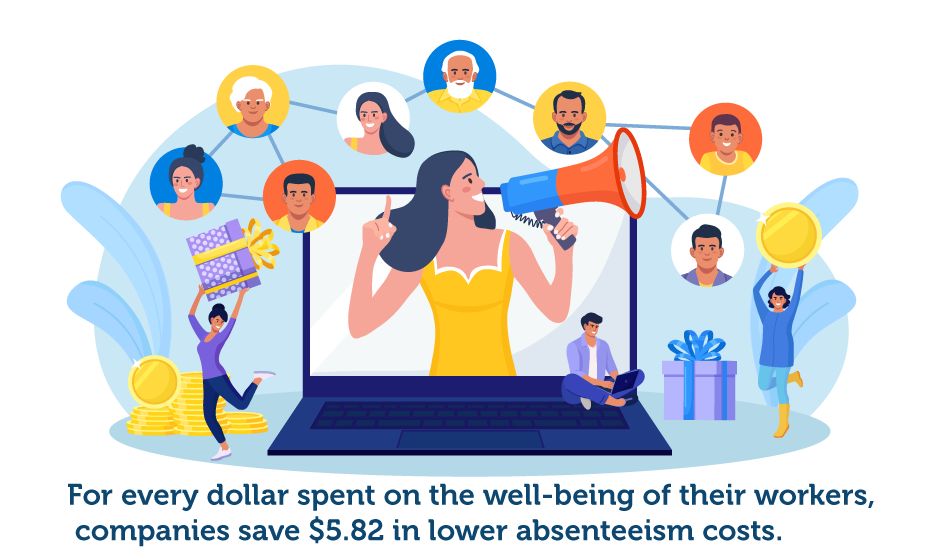
By definition, ROI is a type of business evaluation that calculates the monetary returns from a financial investment. In this case, the venture of choice is wellness benefits in the workplace.
Usually, by implementing such programs, companies typically see a return on investment in health care cost savings and increased productivity due to reduced employee absenteeism.
In other words, supporting workers’ mental and physical well-being is a smart business investment.
What differentiates it from VOI is that, in this case, the investment returns results are tangible. It means that the acquisition of wellness programs can either ensure financial returns or losses for the company.
Several studies confirm that an employee wellness program can have hard returns for businesses.
In one of the most insightful studies published by Harvard Business Review, Doctors Richard Milani and Carl Lavie discovered a significant health improvement in employees who participated in a well-being program.
Namely, the participants received cardiac rehabilitation and exercise training. After completion, 57% of partakers with high-risk health problems turned into low-risk. Per savings, it means a cost decline of $1,421 per employee, or around six dollars return for every dollar the company invested.
Additionally, data from MD Anderson Cancer Center data revealed that wellness programs reduced workers’ absenteeism by 80% and modified-duty days by 64% within six years. Calculated as ROI, there was an investment return of $1.5 million.
Discussing the impact of a wellness program on business growth prompts another type of investment evaluation or VOI.
It refers to the broader and more abstract impact a financial investment has on employee well-being. Therefore, this economic analysis is also more challenging to measure.
Like the financial return on investment, VOI for employee wellness also considers savings on healthcare costs and increased productivity. However, it also examines aspects like increased employee morale, positivity and talent retention, the impact on customer service, etc.
Some of these are much more difficult to measure, so the result of a VOI evaluation is not entirely tangible. Yet, it gives a more personal overview of the value and success of the investment.
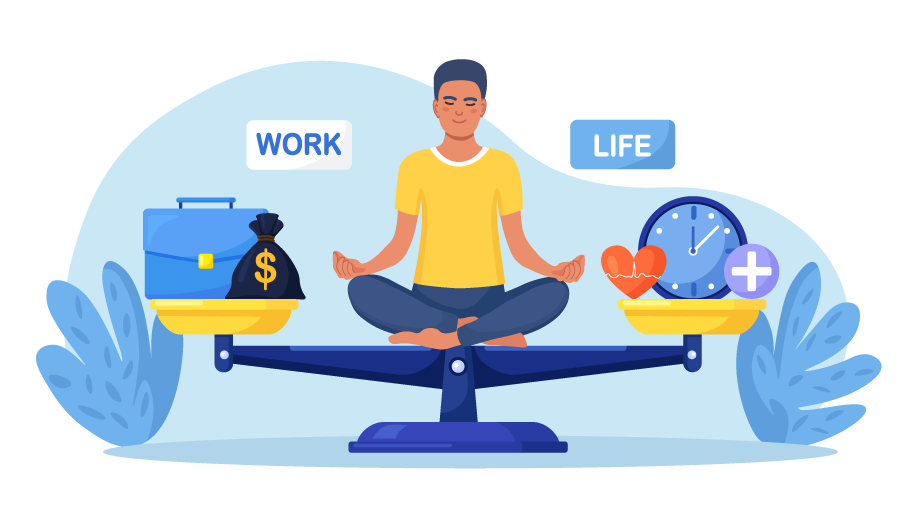
Health care costs are on the rise, as health in the U.S. is declining.
Although COVID-19 tremendously affected the lives of millions of Americans, this was an issue long before the pandemic. But the uncertainty and fear that happened in the past two years only exacerbated the problem.
Since separating private from work life is not entirely achievable, it comes as no surprise that this affected the workforce as well.
To create a healthier workforce and cut preventable health care costs, companies started investing in wellness programs, covering all aspects of employee well-being, including physical, mental, emotional, and financial.
The benefits of employee wellness programs can be many, especially when the employer creates a company culture that promotes healthier habits.
These include reduced healthcare expenses, increased employee morale, better job satisfaction, higher productivity and retention, lower sick day requests, etc.
A wellness services provider gives workers easy access to wellness activities, exercise programs, health screening, or stress reduction programs. That can strengthen employees’ trust and their relationship with the company.
A happy employee is 13% more productive, commits twice as much to a task, and is likelier to stay with the company.
Considering that a reduced employee turnover alone saves U.S. employers over a trillion dollars per year, it’s safe to say that companies can really benefit from a wellness program.
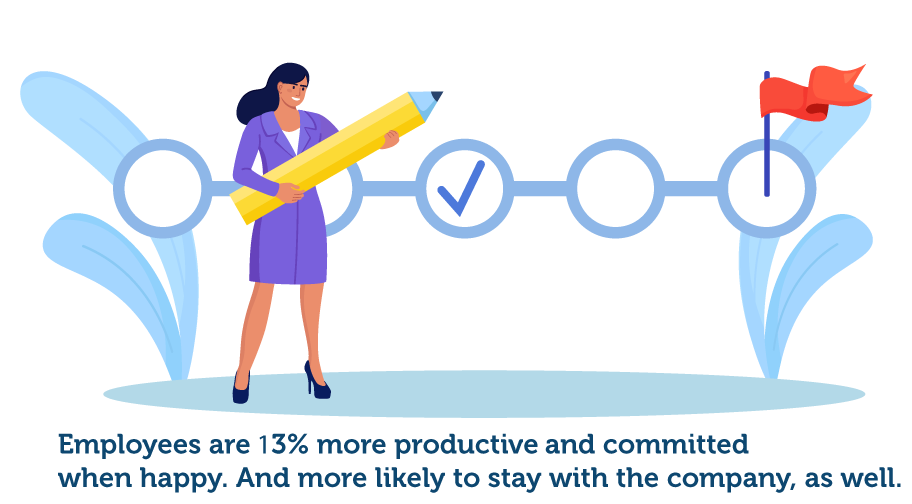
Evidently, businesses can benefit from a wellness program.
And even though 68% of employers agree that investing in employee well-being has become more important, up to 27% struggle to create a business case for it.
But when it comes to employee well-being, there isn’t a one-size-fits-all solution.
Thus, it’s not just about providing workers with the option to enroll in a company program but also making sure that this company perk, however big or small, is helpful to them and that they engage in it.
Finding the right strategy and implementing it in the workplace can be a trial-and-error process. But, estimating the returns of each investment could help companies create a customized wellness program that can be more advantageous for the particular business model and its employees.
That’s why measuring a program’s ROI, and VOI is essential. Otherwise, employers might be losing money and their employees’ interest.
ROI is usually the company’s go-to key performance indicator (KPI) to determine the profitability and success of a wellness expenditure.
Nonetheless, since it’s essentially an investment in people, there’s another way for employers to see the many benefits or estimate the value of an investment.
There are, however, differences in measuring these two performance indicators.
When companies want to justify their investment money, they turn to ROI. Ultimately, it’s the easiest way to determine the monetary value of an investment, and it’s a good one at that.
Businesses can calculate the return on investment by using a basic formula:
ROI (%) = ((money gained – money spent) / money gained) x 100
Simply put, if the company makes an initial expenditure of $1,000 and over time makes $1,500 in profit, the ROI will be 50%, which is a pretty good indicator of the investment’s success.
Regarding employee benefits in the workplace, the ROI on corporate wellness programs has several components.
The money spent variable is the initial investment in a company perk, be it a stress management education or group health insurance plans.
Before making it, employers should strategize the program’s type and scope, its relevance to the employees, and the investment resources.
Once the asset is in motion, they must keep a close eye on all parameters to measure the actual value of ROI on corporate wellness programs.
In the equation, the money gained parameter represents health care costs the company saves by improving the health and well-being of its workers. And the outcome determines whether the investment strategy affected employees’ health positively, cutting down on medical costs for the firm, or needs some rethinking.
However, ROI doesn’t go beyond economic importance, even though the benefits of a wellness program stretch further than reduced health care costs for the firm. So, that’s when VOI comes into play.
It’s debatable whether the advantages of corporate wellness programs should be measured only based on ROI. In fact, Willis’ Health and Productivity Report suggests that more companies are now turning to VOI for answers.
But there’s no formula to measure value of investment accurately.
That raises a critical question. How can companies calculate VOI, and even more importantly, how will they know they’re investing in the correct employee program?
As an abstract concept, VOI goes beyond financial savings and additionally measures:
Although it’s more of a long-term measurement, by paying close attention to the changes and improvements in these components and employee behavior, VOI can ultimately deliver the big picture of how well employee benefits perform as a business investment.

Both ROI and VOI are great options for calculating the performance of business expenditures. With one measuring monetary gains, and the other the overall value of employee investment, it’s difficult to answer which metric is better.
Although VOI is gaining popularity, ROI remains a valuable resource and the go-to KPI for business investments. But, by relying only on the financial returns, employers can miss out on the actual benefits of implementing a wellness program.
To determine the best evaluation method, employers first must understand that they can’t have one without the other.
A happy and healthy employee also means one that will put in the effort.
In other words, this will boost team morale and productivity, increase creativity, and drive innovation, eventually leading to big savings and significant financial gains.
So, ultimately, it’s a tie.
For the best results, employers should consider combining ROI and VOI.
Calculating the return on investment is a great start. It’s simple, and in terms of wellness benefits, it can be both a short-term and long-term measurement. On the other hand, VOI can be more challenging to measure but much easier to notice.
In the long run, adding value to the workplace and creating a company culture around wellness is what employers should strive for.
Wellness programs save companies money.
A report by the International Foundation of Employee Benefit Plans reveals that American employers save up to three times as much as they invest, or worst-case scenario, they come even.
It also showed that 74% of companies experiencing ROI were more likely to have a comprehensive health care approach with health screenings, stress management programs, health risk assessments, and fitness and nutrition programs, compared to just 45% of the non-ROI group.
At the same time, a Harvard Business Review article indicated that the gains could reach up to six times the initial investment.
Regardless of the numbers, it’s important to note that making the most of wellness programs takes time. These financial returns won’t happen overnight, but it’s just a matter of time when companies will maximize savings and employee satisfaction with the right approach.
Wellness trends for the upcoming years predict a workforce more focused on comprehensive and traditional benefits.
Mental health services and good healthcare plans are one of the most sought-after companies’ “perks,” and employers must listen to their workers and give them what they want. Otherwise, recovering from another workforce turnover like the “Great Resignation” could cost them much more.
Ultimately, the dilemma of ROI vs. VOI comes down to the employer and the company culture it builds, with cost savings as the apparent outcome. In an ideal scenario, these two are interconnected and should be measured as such.
Browse our curated list of vendors to find the best solution for your needs.
Subscribe to our newsletter for the latest trends, expert tips, and workplace insights!

Align your company policies with the latest employee wellbeing trends to meet your workforce’s health and wellbeing demands.

As sleep deprivation significantly affects work performance, is the tradeoff between employees working long hours or being available 24/7 worth it?
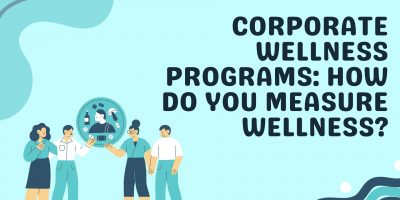
How do you know if your wellness plan is cost-effective and working out for you? How can you measure employee well-being?

Empower your remote employees with practical tips and innovative approaches to prioritize their health and well-being, ensuring workers’ professional and personal development.
Used by most of the top employee benefits consultants in the US, Shortlister is where you can find, research and select HR and benefits vendors for your clients.
Shortlister helps you reach your ideal prospects. Claim your free account to control your message and receive employer, consultant and health plan leads.